
Healthy hair is a reflection of good care and proper maintenance. However, hair breakage and split ends can undermine your efforts, making hair look dry, dull, and weak. These common hair problems are often caused by daily wear and tear, heat styling, and environmental factors. Fortunately, with a few precautions, you can protect your hair and maintain its shine and strength. Here is detailed information on how to prevent hair breakage and split ends so that your hair stays soft and strong.
Understanding Hair Breakage and Split Ends
Hair is a delicate structure that requires constant care to maintain its strength and beauty. However, hair breakage and split ends are common problems that can make your hair look dull, lifeless, and difficult to manage. To deal with these problems effectively, it is important to understand what they are, what causes them, and how they differ.
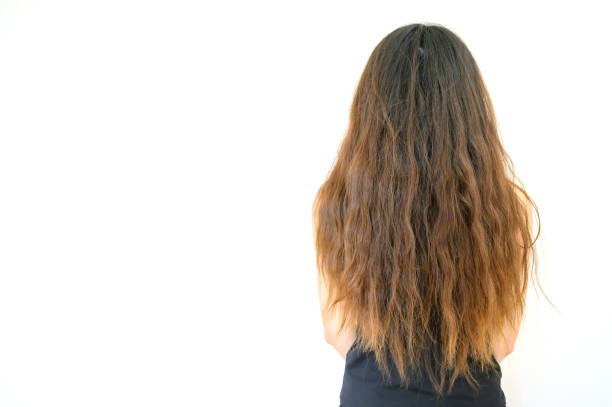
What is hair breakage?
Hair breaks when the hair shaft weakens and breaks. Unlike hair loss, which involves hair falling out at the root, hair breakage occurs along the length of the hair. The result is uneven, tangled hair that appears thin and damaged.

Signs of hair breakage
- Short, uneven hair
- Curly or flyaway hairs
- Hair that feels brittle or rough to the touch
- Difficulty styling due to weakened hair
Common causes of hair breakage
1. Heat damage
Repeated use of hot tools such as flat irons, curling wands, and blow dryers can weaken the hair’s protein structure, leading to hair breakage.
2. Chemical treatments
Over-processing hair with dyes, relaxers or perms can strip out hair’s natural oils, causing hair to become dry and breakage-prone.

3. Overwashing
Washing your hair too often, especially with harsh shampoos, can strip out essential moisture and oils, leaving hair weak.
4. Mechanical damage
Brushing your hair vigorously, towel drying it, or using the wrong tools can cause unnecessary stress and lead to hair breakage.
5. Environmental factors
Exposure to intense sunlight, wind, and pollutants can damage the hair’s cuticle, leading to hair breakage.
What are split ends?
Split ends, or trichoptilosis, occur when the hair’s protective outer layer (cuticle) is damaged, causing the fiber to split into two or more parts at the tip. This type of damage usually begins at the ends of the hair, where the strands are the oldest and weakest.

Symptoms of Split Ends
- Thin, tangled ends of hair
- Hair that tangles easily
- Lack of shine or smoothness
- Noticeable “prickly” hair at the ends upon close examination
Common Causes of Split Ends
1. Lack of Moisture
Dryness is one of the primary causes of split ends. When hair lacks moisture, the ends are more likely to break.
2. Heat Styling
Heat tools not only cause breakage but also contribute to split ends by damaging the cuticle layer.

3. Not Getting Regular Trimming
Without regular trimming, damaged ends can get worse and cause even more split ends at the top of the hair.
4. Harsh Hair Products
Alcohol-based styling products can strip hair of moisture, causing the ends to weaken over time.
5. Friction
Sleeping on a rough pillow, wearing tight hairstyles, or over-brushing can damage the ends of your hair.
Hair breakage vs. split ends: key differences
| Aspect | Hair Breakage | Split Ends |
|---|---|---|
| Location | Occurs anywhere along the hair shaft | Happens primarily at the tips of the hair |
| Appearance | Uneven, shorter strands | Frayed, forked ends |
| Cause | Weakness due to internal or external damage | Damage concentrated at the oldest parts of the hair |
| Impact on Hair | Can make hair appear thin and frizzy | This leads to a rough texture and tangling |
Why it is important to fix hair breakage and split ends
1. Aesthetic appeal
Healthy hair looks shiny, smooth, and vibrant, while damaged hair looks dull, rough, and unmanageable.

2. Hair growth goals
While hair grows from the scalp, it is important to maintain the ends to maintain length. Ignoring split ends can cause them to break more, making it difficult to grow long hair.
3. Preventing further damage
Ignoring breakage and split ends can create a vicious cycle of damage, requiring more drastic measures like cutting off large sections of hair.
How hair structure affects breakage and split ends
Understanding your hair’s structure can help you identify why hair breaks and split ends occur:
1. Cuticle
The outermost layer protects the inner parts of the hair. Damage to the cuticle makes hair more exposed to environmental stressors.

2. Cortex
The middle layer is responsible for hair’s strength and elasticity. Breakage often occurs when the cortex is compromised.
3. Medulla
The innermost layer is absent in fine hair. This part plays a minimal role in strength and damage resistance.
When the cuticle is damaged, the cortex becomes vulnerable to breakage and split ends, resulting in visible signs of hair damage.
The Role of Hair Type in Susceptibility
1. Fine Hair
Fine hair is more brittle and more prone to breakage, especially from heat and styling tools.

2. Thick Hair
Although generally strong, thick hair can develop split ends if not regularly moisturized or trimmed.
3. Curly or Textured Hair
Curly hair is naturally drier and more brittle, making it more prone to breakage and split ends without proper hydration and care.
Top Tips to Prevent Hair Breakage and Split Ends
1. Adopt Protective Styles
Protective hairstyles reduce stress and minimize manipulation of your hair, helping to prevent breakage. Consider styles like these:
- Braids: Loose box braids or cornrows can protect hair from daily damage.
- Buns and twists: Secure styles that keep the ends tucked in.
- Wigs and weaves: These can be great protective options when applied correctly, giving your natural hair a rest from styling.
Pro tip: Avoid styles that pull your scalp too tight, as this can lead to traction alopecia over time.
2. Minimise heat use
Excessive heat styling is a major cause of hair damage. To minimize the effects:
- Use heat tools sparingly, ideally no more than once a week.
- Always apply a heat protectant spray before styling to protect against high temperatures.
- Choose tools with adjustable temperature settings and use minimal heat.
Alternatives to heat styling:
- Try no-heat methods for curls, such as twist-outs, flexi rods, or braiding.
- Air dry your hair whenever required to minimize heat exposure.

3. Use a satin or silk pillowcase
Cotton pillowcases can cause friction, which can lead to hair breakage and split ends. Satin or silk pillowcases are gentle on your hair, reducing friction and helping hair retain moisture.
Bonus: A satin bonnet or scarf can also be used to protect hair while sleeping.
4. Hydrate and nourish your hair
Dry hairs are more prone to breakage and split ends. Do the following to keep your hair moisturized:
- Deep conditioning treatments: Use a hydrating mask or deep conditioner every week to strengthen hair and retain moisture.
- Leave-in conditioners: Keep hair moisturized throughout the day.
- Oils and serums: Lock in moisture with lightweight oils like argan, jojoba, or grapeseed oil.
Hydration tip: Drink plenty of water daily to hydrate your hair from the inside out.
5. Trim regularly
Although it may seem counter-intuitive, trimming your hair every 6-8 weeks prevents split ends from appearing. Regular trims also make your hair look fresh and healthy.
Pro tip: Buy good quality hair scissors. Avoid cutting your hair with household scissors, as this can lead to uneven cuts and further damage.

6. Choose the right products
The products you use play a key role in hair health. Check out:
- Sulfate-free shampoos: Sulfates can strip natural oils from hair, causing it to become dry and prone to breakage.
- Protein-rich conditioners: These strengthen the hair shaft, making it less prone to breakage.
- Split-end repair serums: While these won’t fix split ends, they can temporarily smooth them, preventing further damage.
Keep an eye on the ingredients: Avoid products with high alcohol content, as these can dry out your hair.
7. Be gentle when detangling
Too much brushing or combing can cause unnecessary hair breakage. Instead:
- Use a wide-toothed comb or detangling brush.
- Work in small sections, starting at the ends and slowly moving up to the roots.
- Apply a detangling spray or leave-in conditioner to loosen knots.
Tips for wet hair: Hair is at its weakest when wet, so be extra gentle when detangling.
8. Protect your hair from the weather elements
Environmental factors such as sun, wind, and cold weather can wreak havoc on your hair. To protect your hair:
- Wear a hat or scarf in the harsh weather conditions.
- Use products with UV protection to avoid sun damage.
- Rinse hair after swimming in a chlorinated or saltwater pool to remove residue.

9. Avoid overwashing
- Washing your hair too often can strip out its natural oils, leaving it dry and brittle.
- If you have oily hair, consider washing it every 2-3 days.
- For dry hair, washing once or twice a week may be enough.
Pro tip: Use dry shampoo in between washes to refresh roots without over-cleansing.
10. Eat a balanced diet
Healthy hair starts from the inside. Include these nutrients in your diet:
- Protein: Hair is made up of a protein called keratin. With lean meats, eggs, and beans.
- Omega-3 fatty acids: Salmon, walnuts, and flaxseed These acids found in folic acid promote scalp health.
- Biotin and zinc: Essential for hair growth and strength. Include in your diet nuts, seeds, and leafy greens.
11. Reduce stress
High stress levels can cause hair loss and breakage. Practice stress management techniques such as yoga, meditation, or deep breathing exercises to maintain overall health and reduce hair problems.
Common problems with curly front hair
1. Frizzy hair and flyaway hairs
The front section of your hair is often exposed to more environmental elements (sun, wind, humidity) and frequent touching, which can lead to frizzy hair.
2. Uneven curl pattern
The curls at the front may be looser, tight or less defined than the rest of your hair.
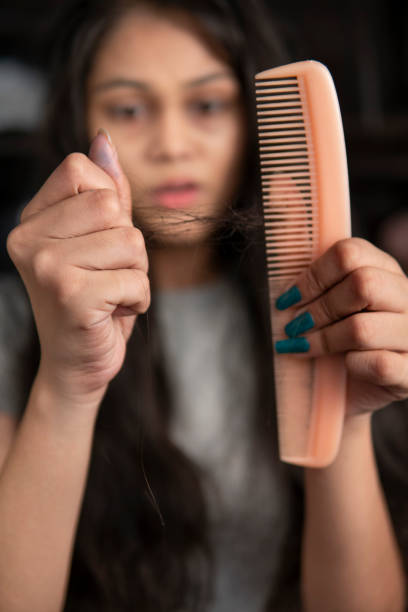
3. Breakage
Constantly styling, brushing, ng, or tying your hair back can weaken the hair at the front, leading to hair breakage and short, uneven pieces.
4. Receding or thinning edges
Overstyling, excessive stress from hairstyling, or improper care can result in thinning or receding hair at the front.
5. Dryness and brittleness
The delicate texture of curly hair and exposure to styling products can cause the front of the hair to become dry and brittle.
Solutions to curly hair problems
1. Focus on hydration
Curly hair thrives best when properly hydrated, as it is naturally drier than straight hair.
- Use a leave-in conditioner: Apply a lightweight leave-in conditioner to the front curls to retain moisture without weighing them down.
- Deep condition weekly: Incorporate a deep conditioning treatment to restore lost moisture and maintain elasticity.
2. Reduce frizz
- Avoid touching: Frequently touching your front curls can disrupt the curl pattern and lead to frizz.
- Use a satin scarf or bonnet: Protect the front while sleeping to reduce friction and maintain definition.
- Apply anti-frizz products: Use a curl cream or anti-frizz serum to smooth flyaways.
3. Define the curl pattern
- Finger coiling: After applying a styling gel or cream, wrap small sections of your front hair around your finger to encourage defined curls.
- Use a Denman brush: This brush can help distribute products evenly and enhance curl definition in the front section.

4. Prevent breakage
- To avoid excessive heat, Minimize the use of flat irons, curling wands, or blow dryers on the front section.
- Protective styling: Use styles like braids, twists, or headbands that don’t put stress on the hairline.
- Detangle gently: Use a wide-toothed comb or your fingers with conditioner to minimize breakage.
5. Care for baby hairs and edges
- Use gentle edge control: Opt for water-based edge control gels to control flyaway hairs without buildup.
- Brush gently: Use a soft-bristled toothbrush or small edge brush to shape and style the edges without pulling them.
6. Avoid over-styling
Teasing the hair at the front too much can cause permanent damage or thinning.
- Alternate hairstyles: Don’t frequently wear tight ponytails, buns, or braids.
- Relax your hairline: Opt for looser styles occasionally to reduce tension on the hair at the front.
Home remedies for frizzy front hair
1. Aloe vera gel
Apply a small amount of fresh aloe vera gel to your front curls to hydrate them and reduce frizz.
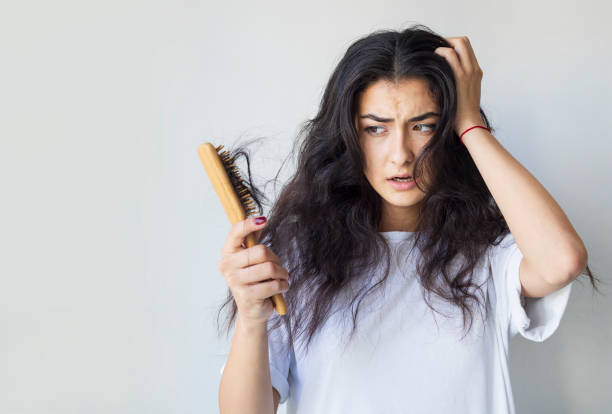
2. Coconut or argan oil
Gently massage a drop of oil into the front section to add nourishment and shine.
3. Wash with rice water
Rinse your hair with rice water to strengthen the hair at the front and promote hair growth.
Which doctor to consult for hair problems?
1. Dermatologist (hair and scalp specialist)
Why consult them?
- Dermatologists are medical doctors specializing in skin, hair, and nail health.
- They can diagnose and treat scalp conditions such as hair loss, dandruff, psoriasis, seborrheic dermatitis, and fungal infections.
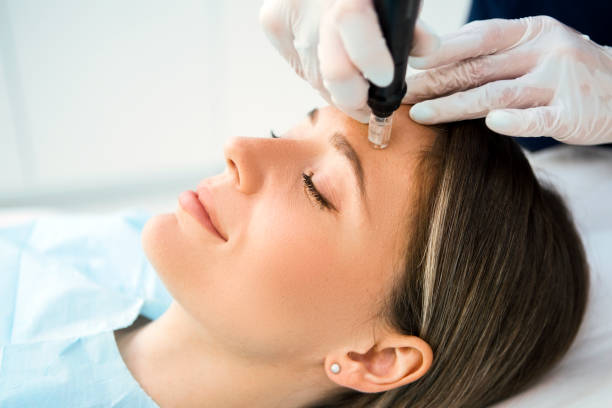
What they may do:
- Examine the scalp.
- Perform tests such as pull tests, scalp biopsies, or blood tests to identify underlying causes.
- Prescribe medications such as minoxidil, finasterid,e or corticosteroids.
- Recommend treatments such as platelet-rich plasma (PRP) therapy or light therapy for hair loss.
2. Trichologist (hair care specialist)
Why consult them?
- Trichologists focus on hair and scalp health, but they are not medical doctors.
- They often work alongside dermatologists or as part of a comprehensive hair care team.
- Best suited for non-medical issues such as breakage, dryness, and mild scalp problems.
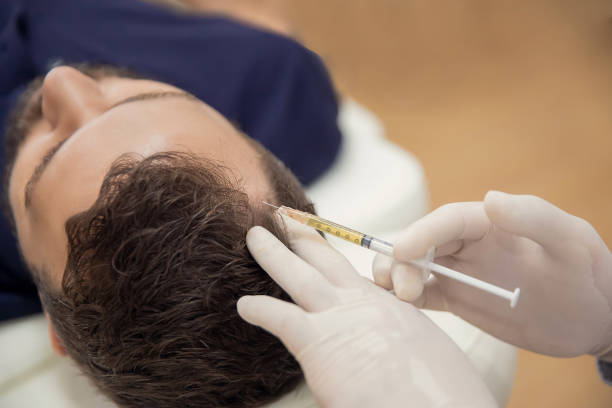
What they can do:
- Analyse your hair care routine.
- Suggest scalp treatments, dietary changes, or products to improve hair health.
- Offer advice on protective hairstyles and maintenance.
3. Endocrinologist (hormonal specialist)
Why consult them?
- Problems such as thinning or excessive hair loss may be linked to hormonal imbalances, including thyroid problems, polycystic ovary syndrome (PCOS), or menopause.
- Endocrinologists can address these underlying hormonal causes.

What they can do:
- Evaluate hormone levels through blood tests.
- Diagnose and treat conditions such as hypothyroidism, hyperthyroidism, or androgenic alopecia.
- Prescribe hormone-regulating medications if needed.
4. Nutritionist or dietitian
Why consult them?
- Hair health is very much linked to nutrition. Vitamin (such as biotin, vitamin D, or iron) deficiencies can cause hair problems.
- Nutritionists can help you identify and address dietary deficiencies.

What they can do:
- Evaluate your diet and recommend foods or supplements for healthy hair.
- Suggest meal plans to improve the overall health of the hair and scalp.
5. General practitioner or family doctor
Why consult them?
- If you are unsure about the cause of your hair problem, a general practitioner is a good starting point.
- They can assess your overall health and provide referrals to specialists such as a dermatologist or endocrinologist.

What they can do:
- Perform preliminary blood tests to rule out deficiencies or systemic diseases.
- Provide basic treatment for scalp infections or mild hair loss.
6. Psychologist or psychiatrist (for stress-related hair problems)
Why consult them?
- Chronic stress, anxiety or mental health conditions can lead to hair problems such as telogen effluvium or trichotillomania (hair-pulling disorder).
- Addressing the psychological aspect can improve hair health.

What they can do:
- Provide therapy or counseling to manage stress.
- Prescribe medications if needed for underlying mental health conditions.
When to consult a doctor?
Seek medical advice if you notice:
- Sudden or excessive hair loss.
- Patchy bald spots. Persistent itching, redness, or flaking on the scalp.
- Hair that doesn’t respond to over-the-counter products or home remedies.
- A change in hair growth pattern or texture.
FAQ: Hair Breakage and Split Ends
1. What causes hair breakage?
Hair breakage can be caused by a variety of things, including:
- Overuse of heat styling tools, such as flat irons and curling wands.
- Excessive chemical treatments, such as bleaching, coloring, or relaxing.
- Poor hair care practices, such as brushing wet hair or using harsh shampoos.
- Environmental factors, including sun exposure and pollution.
- Lack of hydration and nutrition, causes hair to become brittle.
2. How do split ends form?
Split ends occur when the protective outer layer of hair (the cuticle) is damaged, leading to hair breakage. Common causes include:
- Mechanical stress from brushing or towel-drying.
- Chemical damage from hair coloring and treatments.
- Heat damage from styling tools.
- Lack of regular trimming to remove damaged ends.
3. Can split ends be repaired?
Unfortunately, split ends cannot be permanently fixed, but they can be temporarily fixed with certain hair products like split-end serums or bonding treatments. The best way to get rid of them is to trim the affected areas.
4. How often should I trim my hair to prevent split ends?
To maintain healthy ends and avoid split ends, it is recommended to trim your hair every 6-8 weeks. If you are growing your hair out, you can extend this to every 10-12 weeks, but regular trimming is essential for healthy growth.
5. What products can help prevent hair breakage?
Look for products specifically designed to strengthen and protect hair, such as:
- Leave-in conditioners: Provide extra hydration and protection.
- Protein treatments: Repair and strengthen the hair shaft.
- Heat protectants: Protect hair from thermal damage.
- Oils like argan or coconut oil: Lock in moisture and reduce breakage.
6. Does diet play a role in preventing hair breakage?
Yes, a balanced diet rich in essential nutrients can significantly improve hair strength. Key nutrients include:
- Biotin: Found in eggs, nuts, and seeds.
- Vitamin E: Found in almonds, sunflower seeds, and avocados.
- Omega-3 fatty acids: Found in salmon, flaxseed, and walnuts.
- Iron: Found in green leafy vegetables, red me, and beans.
7. Can using a satin or silk pillowcase reduce hair breakage?
Yes, satin or silk pillowcases reduce friction between your hair and the pillow surface, preventing hair from breaking, tangling, and knotting while you sleep.
8. Are there hairstyles that prevent hair breakage?
Protective styles like braids, buns, twists, or low ponytails can protect hair from environmental damage and keep it from getting tangled. Avoid tight hairstyles that can create tension and cause hair breakage.
9. Does using the wrong shampoo cause hair breakage?
Yes, shampoos with harsh sulfates or alcohol can strip out natural oils from hair, causing hair to become dry and break. Choose a sulfate-free and hydrating shampoo.
10. How does heat styling contribute to hair breakage?
Heat styling tools weaken the hair shaft by stripping away moisture and breaking down the proteins in the hair. Always use a heat protectant and limit heat use to 1-2 times a week.
11. Are hair breakage and hair loss the same thing?
No, hair breakage and hair loss are different:
- Breakage: This occurs when the hair shaft breaks due to damage.
- Hair loss: This involves hair falling out from the roots, often due to hormonal imbalances, stress, or medical conditions.
12. Can hard water cause hair to split and break?
Yes, hard water contains minerals like calcium and magnesium that can build up on the hair, leaving it dry and brittle. Using a clarifying shampoo or water softener can help.
13. What is the best way to detangle your hair to prevent breakage?
- Use a wide-toothed comb or your fingers.
- Detangle your hair when it’s wet (from conditioner) or slightly damp.
- Start at the ends and work your way up to the roots.
14. How do I know if my hair needs a protein treatment?
Signs your hair may need protein:
- Feels too soft, mushy, or stretchy when wet.
- Has difficulty maintaining curls or styles.
- Breakage is excessive, even when moisturized.
15. How can I protect my hair from environmental damage?
- Wear a hat or scarf in bad weather (sun, wind, or cold).
- Use a UV-protectant spray to protect your hair from sun damage.
- Rinse your hair with clean water before and after swimming to prevent damage from chlorine or salt.
A holistic approach to hair care
Preventing hair breakage and split ends isn’t about any one magical product or practice—it’s about creating a routine that prioritizes your hair’s health. From protective styling and gentle detangling to nourishing your hair with the right products and a balanced diet, every step counts.
By incorporating these tips into your routine, you can strengthen your hair, minimize damage, and enjoy vibrant, resilient hair. Remember, consistency is key—care for your hair carefully, and it will thank you with beauty and strength!
For more holistic beauty tips and advice, check out our other posts on Holistically Health and Beauty.





[…] Heat styling tools like flat irons, curling wands, and blow dryers are essential for achieving sleek, voluminous, or defined hairstyles. However, too much heat can weaken your hair, leading to dryness, split ends, and breakage. The good news? You don’t have to give up your favorite styling tools to maintain healthy hair. […]